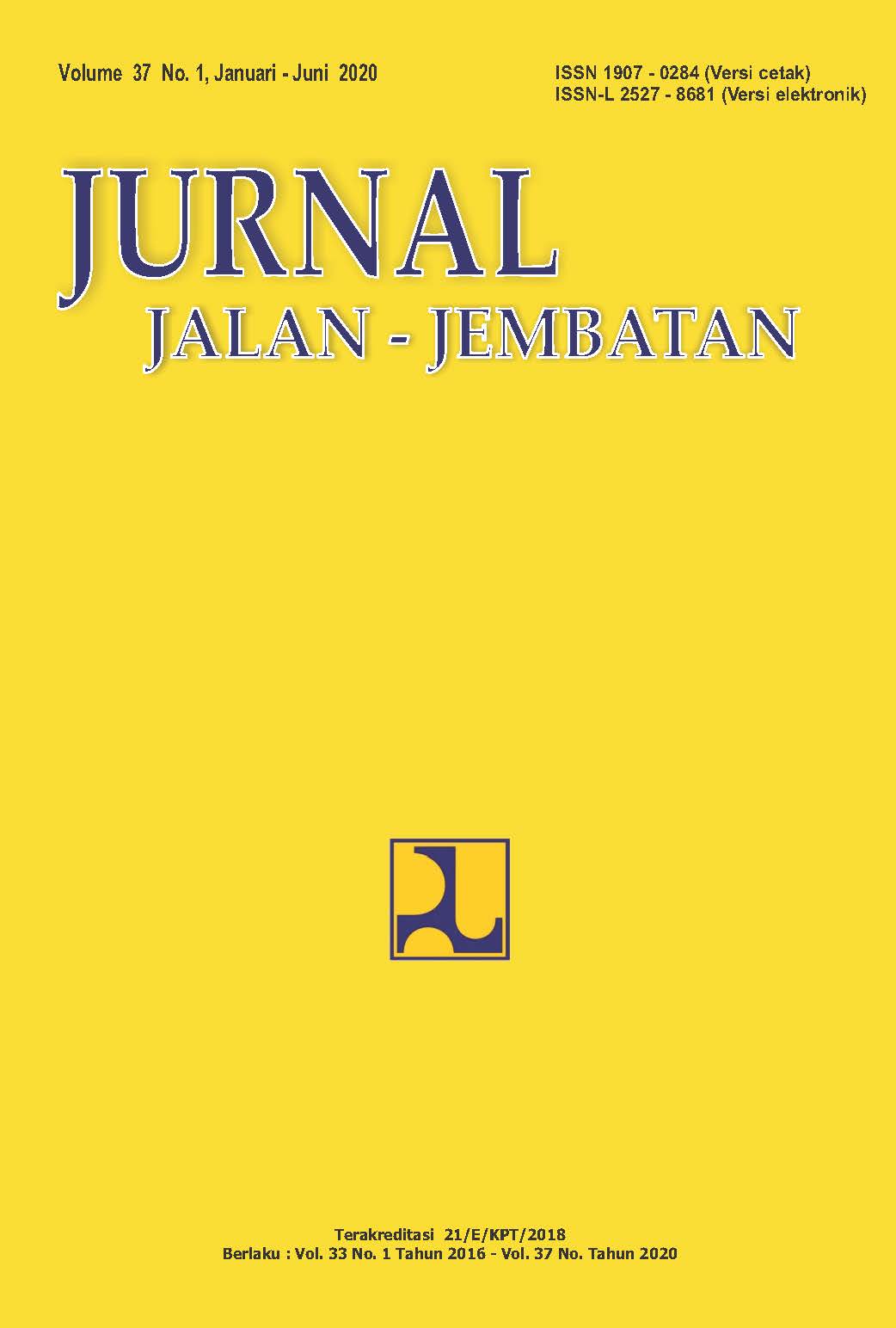RADIUS PUTAR KENDARAAN DESAIN UNTUK PERANCANGAN GEOMETRIK JALAN DI INDONESIA
Main Article Content
Abstract
ABSTRACT
Designing the width of the vehicle lane must consider the type of vehicle that passes through it. This is obtained by knowing the dimensions of the vehicle and the vehicle's wheelbase. From these two data we can find out the wheel tracks and the outer size of the vehicle body (sweeping path). This paper is intended to determine the turning radius of a design vehicle for the geometric design of the road. The design vehicles in question are the vehicles whose dimensions are mentioned in various regulations and vehicles which are the dominant results of research on the Road and Bridge Research and Development Center. The method used is a literature study of the rules and research results of the Road and Bridge Research and Development Center. Determination of the turning radius of the vehicle is done using the Autoturn software application with the assumption: flat pavement surface, the tire does not slip, the vehicle steering lock is 40o, the steering angle is 31.6o, the U-turn maneuver is 180o. The results showed that there were 17 vehicles that became design vehicles equipped with a turning radius. There are 2 vehicles that have 2 vehicles that have a turning radius of more than 12 meters.
Keywords: vehicle turning radius, vehicle trail, vehicle design, vehicle dimensions, road geometric procedures.
Article Details
Authors who publish in this journal agree to the following terms:
-
Authors retain copyright and grant the journal the right of first publication with the work simultaneously licensed under a Creative Commons Attribution License, which allows others to share the work with acknowledgment of the work's authorship and initial publication in this journal.
-
Authors may enter into additional contractual arrangements for the non-exclusive distribution of the journal's published version of the work (e.g., post it to an institutional repository or publish it in a book), with acknowledgment of its initial publication in this journal.
-
Authors are permitted and encouraged to post their work online (e.g., in institutional repositories or on their website) as it can lead to productive exchanges, as well as earlier and greater citation of the published work.
Each submitted manuscript must be accompanied by a "Manuscript Originality Statement" and a "Copyright Transfer Statement".

